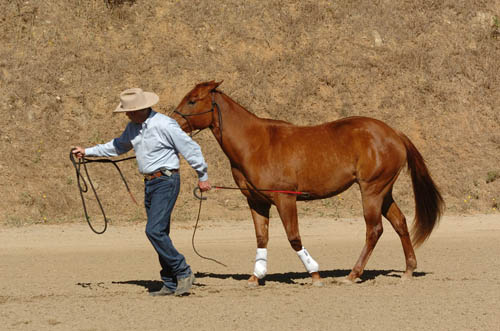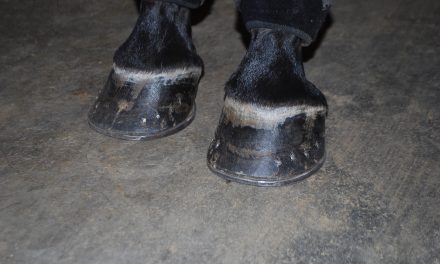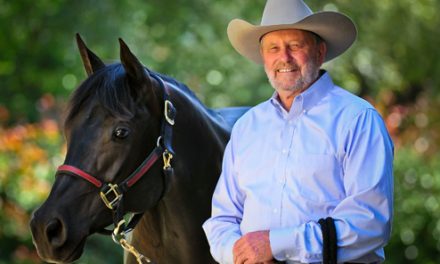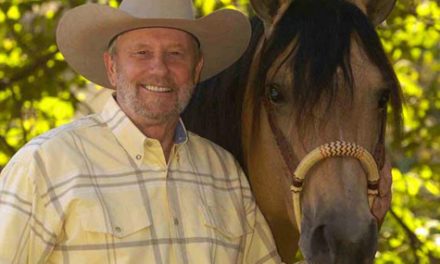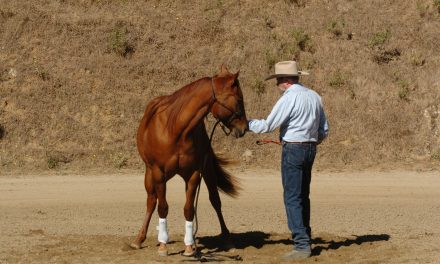 Safety on the trail is always our first concern. A horse that bucks, bolts or even rears when out on the trail is unsafe for the rider and for anyone who is near. This behavior is not acceptable and training is needed however it is important to understand why a horse would behave this way. It appears that this happens frequently and there are multiple reasons why horses do this. Let’s discuss some of the reasons.
Safety on the trail is always our first concern. A horse that bucks, bolts or even rears when out on the trail is unsafe for the rider and for anyone who is near. This behavior is not acceptable and training is needed however it is important to understand why a horse would behave this way. It appears that this happens frequently and there are multiple reasons why horses do this. Let’s discuss some of the reasons.
I’d like to start with a story about an incident that happened several years ago. I did a radio interview on The Horse Show with Rick Lamb. He asked me what is the best way to handle a horse that bolts out on the trail?
A horse will bolt when his emotional level is up because all horses have the flight instinct. Some horses, in general have a higher emotional level. Often we take our horses out on the trail when they are fresh and without any warm up. They are feeling frisky and maybe have not been ridden for a couple of weeks and they are anxious to get out. In this situation, we are setting ourselves up to have big problems. I’ve been working with horses called “problem horses” for close to 25 years and I would say there are no problem horses, only uneducated horses and owners. I have found that there is an assumption with most horses we just assume that we can get on them and go out on the trail and they are going to be fine. I have had horses here at the barn who are 10 to 15 years old and still emotional basket cases in their own environment and when going out on the trail, they are even worse. When something startles them, they bolt. To me, these are not problem horses but just uneducated horses with riders who also need more education.
Sometimes a horse will react to fear not by bolting, but by bucking. Another reason a horse may buck is that while we are out on the trail, we separate from each other and one rider goes right and the other goes left. The horse may be what we call “buddy sour” and the horse becomes concerned about his buddy leaving. Horses are herd animals and the more that we restrain a horse, the more we increase his emotional level. A horse that is being held back may respond by bucking or even rearing.
Getting back to Rick Lamb’s question on what to do when we are out on the trail, I explained that there are certain things we can do on the trail but only if the horse knows the exercise. If the horse does not understand what he is being asked to do, it doesn’t make any difference how good the rider is, the horse is not going to cooperate. What I recommend is that the action we may need to take out on the trail must be started at home. In the interview, Rick said, “No, Charles, you don’t understand my question. What do we do out on the trail?” I replied that we must start at home. We must educate our horse with certain exercises that we can use to control the horse’s behavior. We must be able to control the hips, the shoulders and most of all, we must have control of the emotions. Exercises that allow us to control the hips, shoulders and feet are described in detail in my book, Building Your Dream Horse. An educated rider is equally important as an educated horse.
I always like to measure the emotions of a horse on a scale of one to ten, one being lethargic and ten being a horse that is out of control. When a horse is a ten, the most we may be able to bring it down to is a five. A horse that is a five or six, we may bring down to a three or four. By sacking out a horse and working with the emotions we can set ourselves up for success. When we have addressed emotional issues at home in a safe environment, when we get out on the trail the horse will not over react and bolt or buck.
How long it takes to work with a horse on these issues depends on the emotional level of the horse. I had a Tennessee Walker at the barn for three months and that horse was an emotional wreck and was very bad about bolting. After three months there was a huge difference in the horse but I really needed another month to make the horse totally sound out on the trail. Generally, when a horse has been in training with me for three or four months, I have established body control, brought the emotional level down and the horse will be essentially sound.
Time is an important aspect. Many of us can accomplish a lot with a horse in a very short time. For example, the colt starting contests where in the space of three to four hours we are able to get on and ride. The fact that we can get on and ride them doesn’t mean those horses are really broke or that their emotions are stable. You can’t estimate the time it will take you to get the horse to the point where you can go out on the trail and be fairly safe. We all know that horses are dangerous and we need to do our basics at home. Safety is always our first concern. Once we have accomplished the basics at home and we can control the horse’s feet, the horse understands the exercise. Then, when we are out on the trail and the horse thinks about bolting, we can control the horse’s feet. The horse is going to tell you if he is getting ready to bolt. When you are going down the trail and the horse throws his head up in the air like a giraffe, that action tells you that you need to control the horse’s feet and not wait until the horse is trying to run away or buck. I have several DVDs available that speak to the basics that riders and horses need to know to be safe on the trail.
So, for a safe and pleasant ride on the trail, we need to put some training time in with the horse. Sometimes we don’t like to spend our time training our horse. When we also complain about not having fun when riding because the horse is trying to bolt or he jigs all the way home, we find that training time is time well spent. If you wind up having to walk the horse home for the sake of safety, time spent at home training may seem much more pleasant.

